

The Magnificent 11: The short list of non-U.S. born racers to qualify No. 1
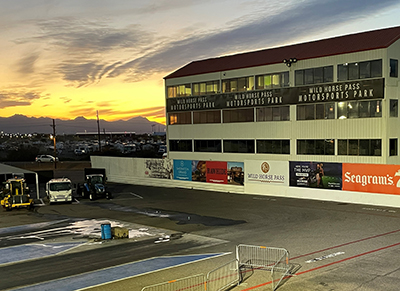
The Insider is back in the saddle after back-to-back weekends in Phoenix and Pomona, and it was Phoenix and the final NHRA Arizona Nationals that provided the genesis for today’s column. Before we get there, let me tip my hat to the history of Wild Horse Pass Motorsports Park and all that it meant to Southern Californians like me that Charlie Allen built Firebird International Raceway after the demise of our treasured Orange County International Raceway to have a place where we could still see match racing, albeit a six-hour drive away. It was sad to walk the grounds of the Phoenix track knowing it could be the last time I ever do, much the same way I felt on that tough October night in 1983 at OCIR (and, as was the case that night at OCIR, people were still talking about and praying that this was really a false end).
Five years ago, I wrote about the Phoenix track’s place in Top Fuel history with Don Garlits and Shirley Muldowney in the starring roles, but this year the story was in Pro Stock. No, not Camrie Caruso being just the second woman in NHRA Pro Stock history to win a national event, but rather Cristian Cuadra’s No. 1 qualifying berth.
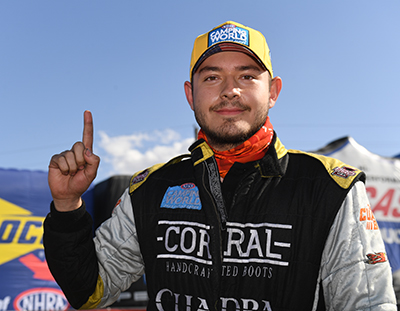
With his pass of 6.552, Cuadra became the first Mexican-born racer to qualify No. 1 in NHRA’s Pro classes, and just the 11th non-American to do so.
Cuadra also made some interesting trivia in his Ford, becoming the first blue oval Pro Stock racer to qualify No. 1 since Bob Glidden did it 31 years ago in his Motorcraft Probe (7.25, 190.75) at the 1992 NHRA Springnationals in Columbus, and the first driver of a Mustang since “Dyno Don" Nicholson wheeled his Mustang II to the pole at the 1977 NHRA U.S. Nationals (8.61, 156.52) en route to the world championship.
"I'm really, really proud," said Cuadra. “We're making history. That's why we are here because we wanted to make history for our country.“
It turned out to be such a big deal in Mexico that the family later received a congratulatory phone call from Mexico's president, Andrés Manuel López Obrador.
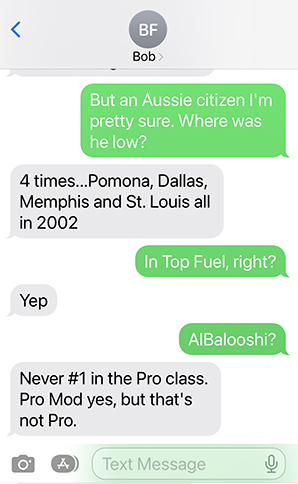
As it became evident Saturday afternoon in Phoenix that no one was going to replace Cuadra at the top of the Pro Stock field, I had a frantic yet fun text conversation with drag racing stats guru Bob Frey trying to figure out which other non-Americans had qualified No. 1 so that I could file my end-of-day story with the right facts.
In addition to Cuadra, we came up with 10 more, including four Australians, four Canadians, and two from other parts of the world. I’ll give you a second to try to see if you can come up with that list in your brain. Some are easy, others a little tough, and I’m thankful that Frey helped me catch the ones I never would have considered.
OK, take your shot. I’ll wait.
[Insert Final Jeopardy theme music here …]
OK, time’s up. I’ll feed them to you one at a time starting with the guy that no one remembers and about how little hoopla was made when he did it.
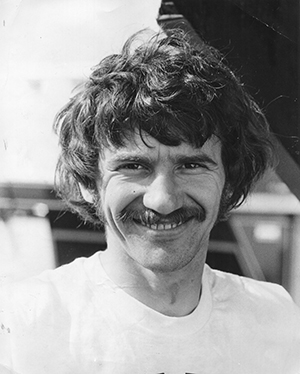
The first non-American driver to qualify No. 1 in a Pro class at an NHRA national event was Bulgarian-born Kosty Ivanof, who put his Boston Shaker on the Funny Car pole of the 1974 NHRA Gatornationals, but because he was so much better associated with the Boston area (Brighton, Mass.), nothing was said in any of the press releases or in NHRA National Dragster about his heritage, or maybe they simply didn’t know. It took National Dragster a year, until May 1975, to do a profile on Ivanof, where the harrowing details of his immigration became known.
Ivanof’s father, Traiko, was in the automotive business, involved with busses, taxis, and “anything else that was on four wheels,” when the communist government took over in Bulgaria.

In 1958, Traiko used his mechanical expertise to turn the family’s '28 Chrysler into a bulletproof escape vehicle to crash through the "Iron Curtain" from Yugoslavia into Greece in 1959 with his wife, Marika, and three sons: Kosty, Damian, and Luben. (The photos here are screenshots from a one-minute trailer for a documentary film made about the escape, which can be found here.)

“After several years of haggling, we managed to get a one-year visa to Yugoslavia, which would be much easier to escape from since Bulgaria had a real ‘Iron straight curtain,’ consisting of three locked doors in each passageway,” Kosty told ND in May 1975. "All during the winter that year, we would work secretly at night by making cement blocks to line the insides of my dad's 1928 Chrysler, which had a '49 Dodge straight 8 engine, a Chevrolet truck 4-speed, and a Ford rear-end.
“On the night that we were supposed to go back to Bulgaria, we instead headed toward the Greek border, where the gate was barred only by a hinged telephone pole. We put a big steel plate in front of the radiator and cement blocks on the outside of the hood and began to build up speed.

“We had a homemade periscope so that the entire family could lie down on the floor and not be seen. My dad pointed the car toward the telephone pole, and the guards must have thought that we were going to stop since they did not fire. When the car broke through and steered around a giant cement block in the middle of the road though, they knew something was up and started shooting. But by that time, we had already gone a considerable distance, and the Greeks opened up their gate to let us in, and we were free."

The daring escape received coverage in LIFE Magazine and other news sources, and the car was put on display in a museum in Athens.
Four years after the family landed in the United States, Ivanof began racing in a ’57 Ford and eventually worked his way through the Modified Production ranks and into an injected Corvette Funny Car and then a blown nitro burner in 1969.
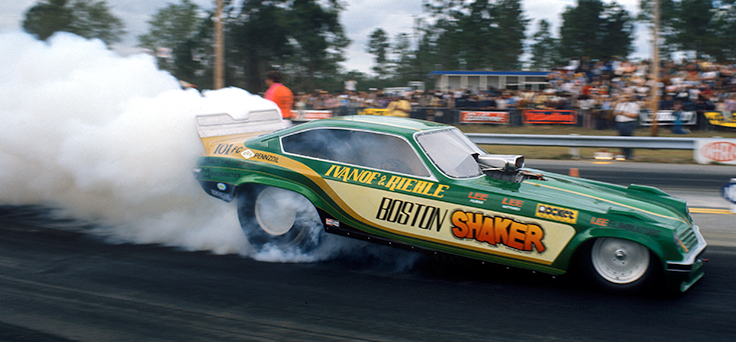
The car that qualified low at the Gatornationals was a Vega that he had just purchased from Don Schumacher, and his 6.51 on Saturday bumped Friday leader Don Prudhomme’s 6.52 from the top spot. Ivanof also had top speed of the meet at 227.84 mph on the run.
Ivanof’s day ended early Sunday in a first-round loss to Larry Fullerton when the body came off downtrack for some reason and, according to Drag Racing USA’s coverage, “flew 20 stories high.”
Ivanof later earned another No. 1 start, at the 1980 Winternationals, and defeated Tom Ridings and Gordie Bonin before falling to Ron Colson in the semifinals.
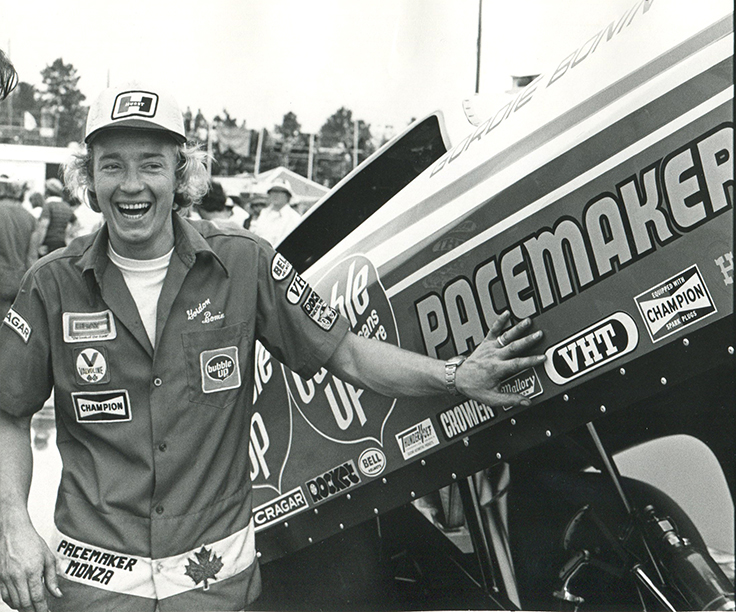
Three years after Ivanof’s No. 1 at the Gatornationals, Canadian Gordie Bonin became the next non-U.S. polesitter, putting the Ron Hodgson-owned, Jerry Verheul-tuned Bubble Up/Pacemaker on the pole with a 6.266, just four-thousandths quicker than Rick Johnson’s 6.270 in Bill Schifsky’s Bear Town Shaker Mustang.
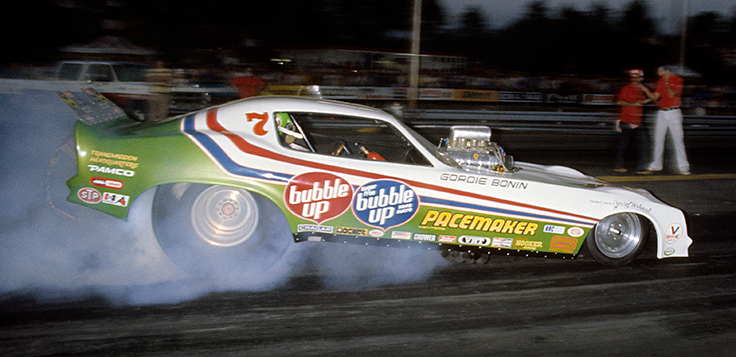
Unlike Ivanof, Bonin would go on to win the race, besting Dodger Glenn, Gary Burgin, and Raymond Beadle before taking on Roger Lindamood in the final. Lindamood had escaped the semifinal only when Don Prudhomme — who had won 14 of the previous 17 events but was sick this weekend with the flu — red-lighted, but Lindamood blew the motor in beating him and could not make the final-round call, giving Bonin a solo to the title.
Although Bonin would go on to win eight more Funny Car titles, he was never again a No. 1 qualifier, better known for his top-end speeds that earned him the nickname “240 Gordie.”
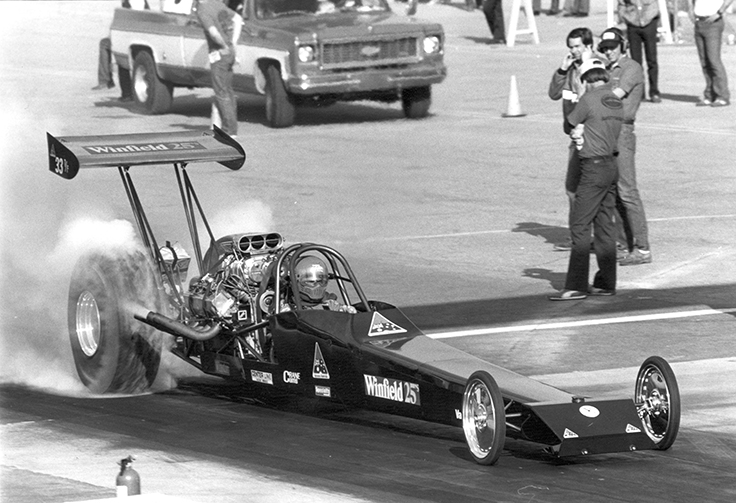
The 1982 Winternationals were historic in that two of the low qualifiers were born outside of the U.S. as Australian Jim Read claimed the pole in Top Fuel and Canadian Frank Hawley took No. 1 in Funny Car.
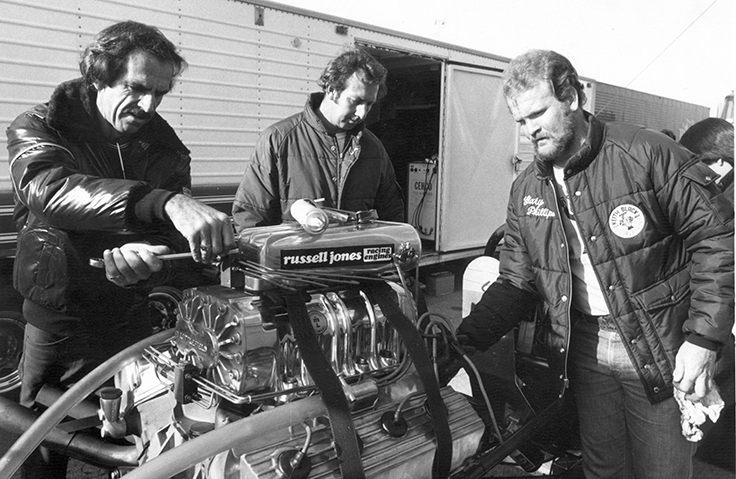
Read, of Sydney, and partners Russell Jones and Gary Phillips (pictured above, from left) borrowed California racer R.J. Trotter's dragster and shocked the Top Fuel troops at the season opener with a 5.698 pass that was three-thousandths ahead of Gene Snow’s 5.701 but lost to reigning world champ Jeb Allen in round one.
Read went on to become Australia’s most successful racer, with 17 national championships and 16 Australian championships. He also was the first drag racer to break the seven-second, six-second, and five-second barriers in Australia and the first to exceed 300 mph (483 kph) on the quarter-mile in Australia.
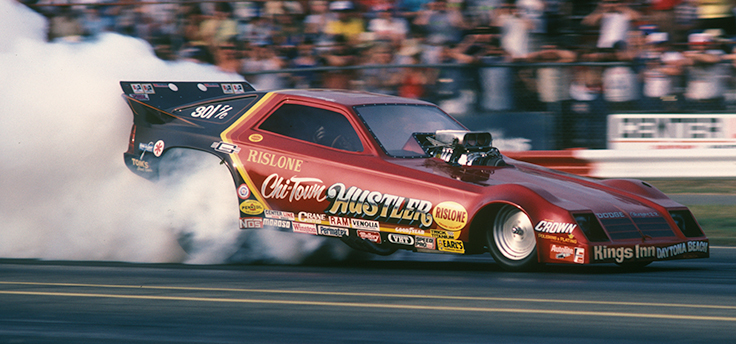
Hawley’s surprising No. 1 in the Austin Coil-tuned Chi-Town Hustler was just the beginning of a two-year reign of terror that turned the match-race champions into two-time world champions. Hawley and Coil would win seven combined races and both championships in 1982 and ’83 and also were low qualifiers at Fremont Dragstrip in 1982 and Denver in 1983.
Hawley returned to the low qualifier’s list seven years later at the wheel of the Coors Extra Gold car of the Gwynn family after Darrell Gwynn’s career-ending injury in England in April 1990. Hawley is the only driver on our short list to go No. 1 in two classes.
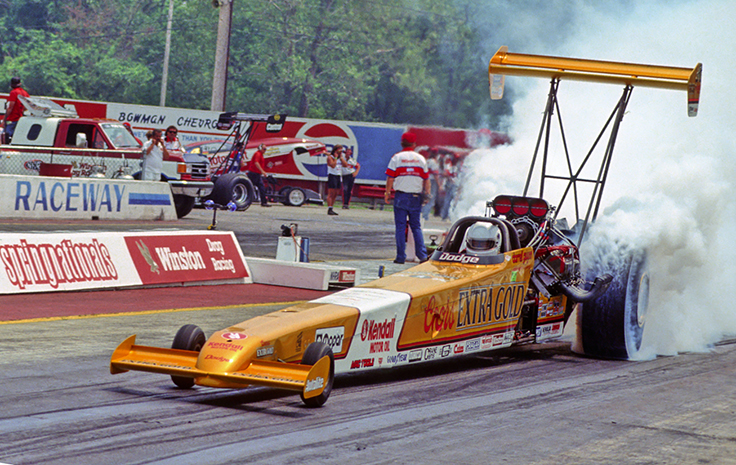
Hawley grabbed three No. 1 qualifiers in 1990, including his storybook win in his debut in the car at the Springnationals in Columbus, as well as No. 1s in Sonoma and Seattle and a win in Dallas. He notched three more No. 1s in 1991, in Phoenix, Montreal, and Englishtown.
Incredibly, Hawley was back on pole position some 17 years later in Charlotte in 2008 in Roger Burgess’ Rite Aid-sponsored Dodge.
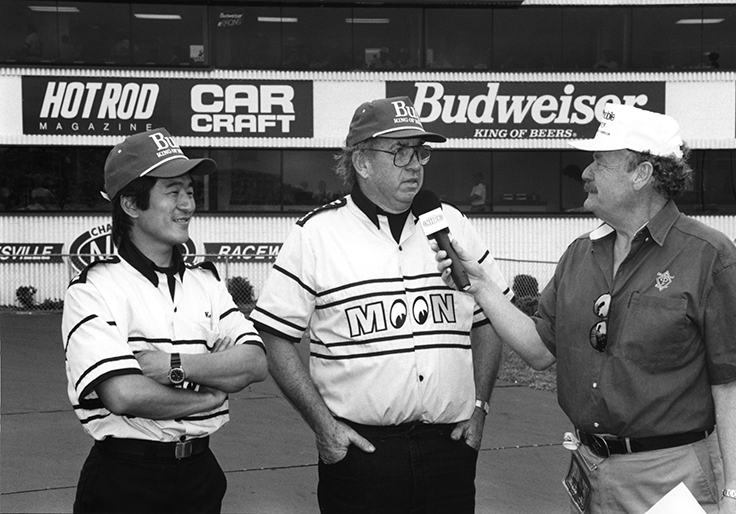
Japan’s Kenji Okazaki added his name to the growing list in 1994, in Jim Dunn’s Mooneyes car, taking the No. 1 spot at the 1994 Gatornationals and again in Phoenix in 1997, which led to Okazaki’s breakthrough victory in Englishtown later in 1997, still the only win by a Japanese national.
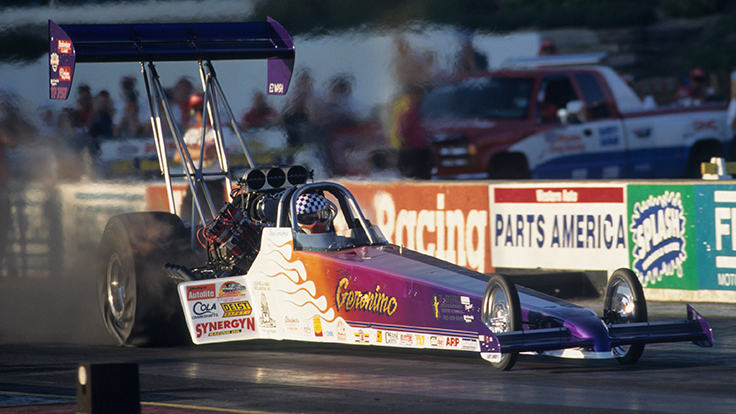
Australia jumped back on the leader board when a fairly unknown Aussie import, Dave Grubnic, piloted Bill Blomgren’s Geronimo Top Fueler to the No. 1 position in Memphis, Tenn., in 1999, an accomplishment that ultimately helped pave the way to the amazing career he now enjoys as world champion tuner for Brittany Force.
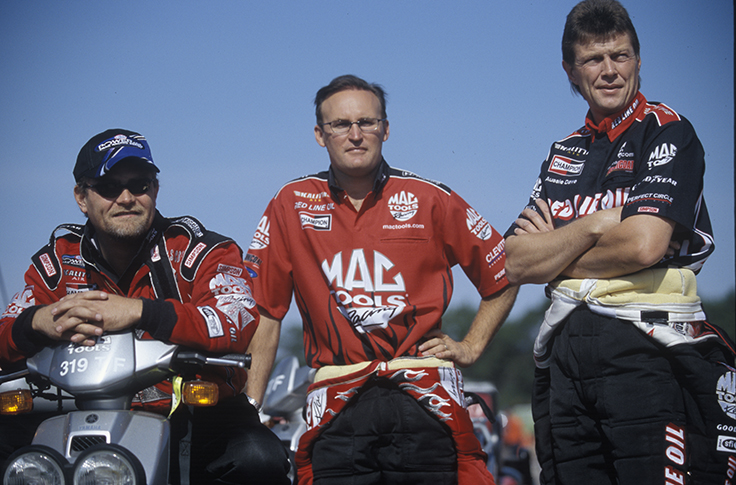
Grubnic had spent three tough years driving the quad-cam-engine fueler of fellow Australians Phil and Chris McGee with little success, and his driving and tuning acumen at the wheel of first John Mitchell’s Montana Express then Bill Miller’s BME dragster, obviously caught the eye of Connie Kalitta, who brought him onto his team alongside Scott and Doug Kalitta in 2004.
Grubnic notched five No. 1s that year — Phoenix, Gainesville, Atlanta, Chicago, and Memphis — in first the Red Line Oil car then the Zantrex-3 entry, and subsequently notched four more No. 1s and three victories before being dismissed from the team in early 2014.
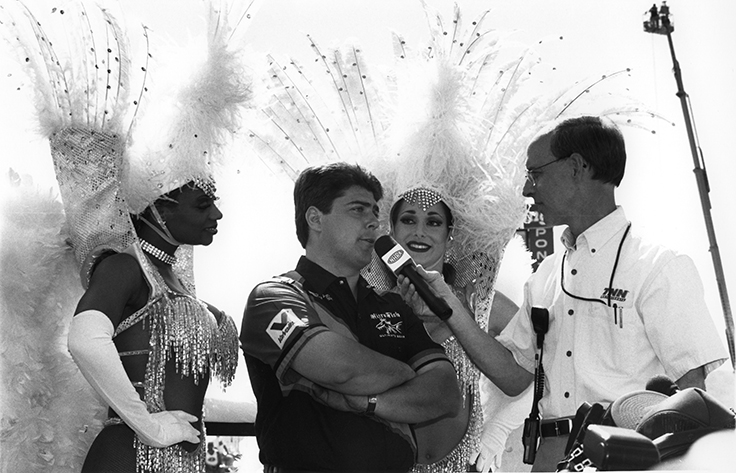
Las Vegas was the site of the next driver on our list as Canadian Todd Paton surprised a lot of folks by putting the NitroFish Pontiac on the pole at the inaugural NHRA national event in Las Vegas in 2000.
Paton was at the wheel of the car that Phil Burkart had driven to victory the year before in Columbus, now owned in a consortium with Whit Bazemore as one of the owners. Todd, with virtually no points in the standings, was among the first Funny Cars down the new track and charted the track's first 300-mph run on a 5.040, 304.74 pass.
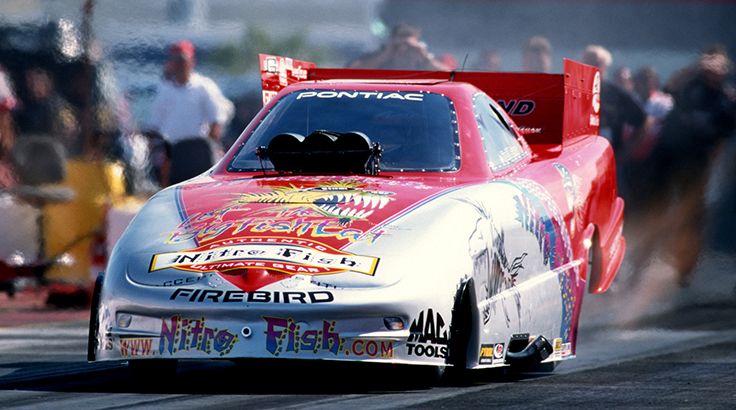
He took over the No. 1 spot in Saturday’s first session with a 4.945, just ahead of Jim Epler and the WWF Racing car, then sat out and nervously watched in Q4, where no one could displace him. Paton beat Bob Gilbertson in round one but dropped a cylinder in round two and fell to Tony Pedregon.
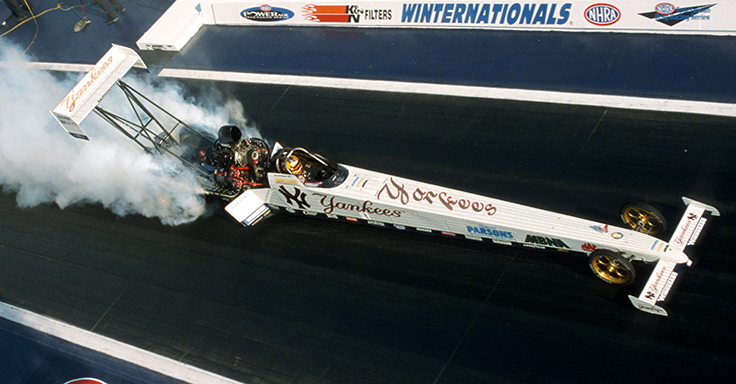
Second-generation Australian Andrew Cowin flipped the spotlight back Down Under in 2002 at the wheel of the Gwynn family’s New York Yankees-sponsored dragster.
Cowin, son of famed Aussie Funny Car driver (and 1987 Winternationals runner-up) Graeme Cowin, put the Gwynn machine on the pole four times that season — in Pomona, St. Louis, Memphis, and Dallas — en route to an eighth-place finish, stoked by a runner-up at the St. Louis event.
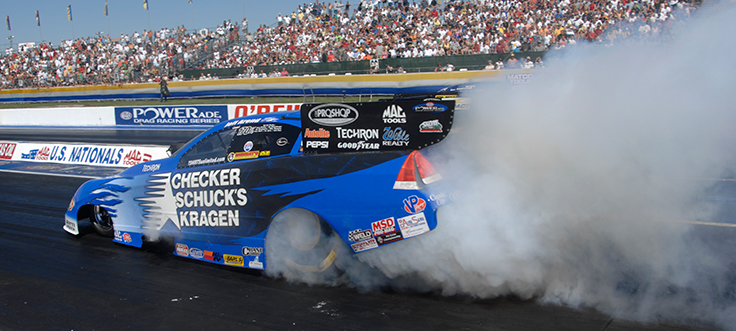
The Maple Leaf flag flew high again in 2007 when Ontario’s Jeff Arend put the Worsham family's second Checker-Schuck’s-Kragen Monte Carlo on the pole twice, including at the U.S. Nationals.
The following year, Arend joined the Kalitta Motorsports team in 2009 and scored an emotional Funny Car victory in Memphis, the team’s first in the class since Scott Kalitta’s death the previous year and his first of three with the team.
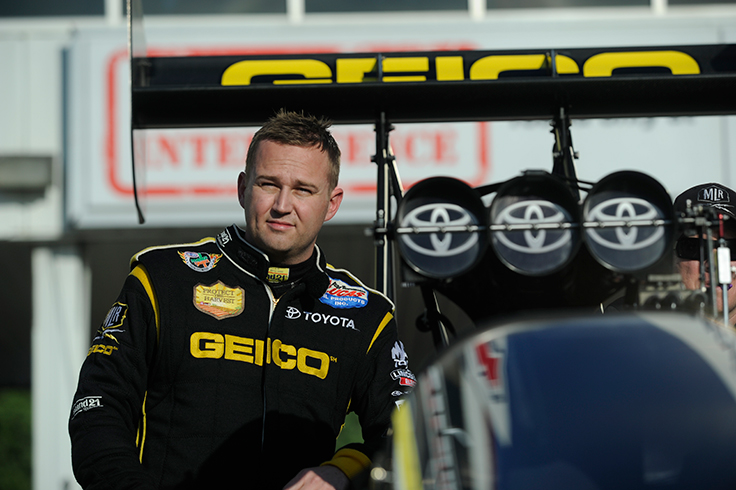
And finally, back to Australia for Adelaide’s Richie Crampton, who put the Lucas family’s GEICO dragster on the pole at the 2014 NHRA World Finals in Pomona, then scored three more No. 1s in 2015 and a pair in 2016.
Crampton went on to win 10 NHRA national events titles, including the U.S. Nationals in 2014, and is the most successful non-U.S.-born Pro racer in history with 10 wins, just one ahead of Hawley.
So, in case you haven’t been keeping score, here are the 11 heroes:
Bulgaria: Kosty Ivanoff
Japan: Kenji Okazaki
Australia: Jim Read, David Grubnic, Andrew Cowin, Richie Crampton
Canada: Gordie Bonin, Frank Hawley, Todd Paton, Jeff Arend
Mexico: Cristian Cuadra
When you consider that there have been 2,831 combined Top Fuel/Top Eliminator, Funny Car, and Pro Stock races since 1955, and only 42 times has a non-American driver been No. 1, you can see that it’s a rare feat to be celebrated.
Phil Burgess can be reached at pburgess@nhra.com
Hundreds of more articles like this can be found in the DRAGSTER INSIDER COLUMN ARCHIVE
Or try the Random Dragster Insider story generator



















































